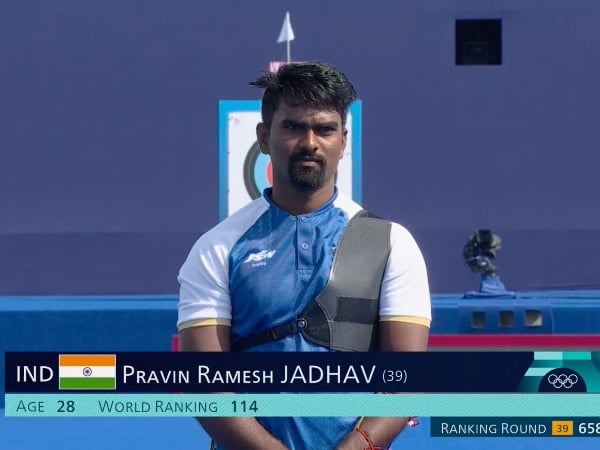views : 786
3 Min Read
Pravin Jadhav, Bhajan Kaur miss the bus, drawing attention to gaps in coaching
Pravin Jadhav and Bhajan Kaur, part of the Indians Archery team in the Paris 2024 Olympic Games, found themselves out of the national squad for the first two stages of the Archery World Cup after finishing 69th and ninth respectively in the Archery Association of India selection trials that ended in Kolkata on Monday. Pravin Jadhav (Services) exited early as he shot 646, well below the 655 that saw a four-way tie for the 32nd spot and a shoot-off. It is important to remember that he shot 658 in the Olympic Games ranking round. Haryana’s Bhajan Kaur, shot 659 in the Olympics, made the cut in 25th place with 620, improved with 643 and 647, but could not progress to the knockout stages.
Atanu Das and Parth Salunkhe forced their way back in the men’s team alongside B Dhiraj and Tarundeep Rai while Simranjeet Kaur and Anshika Kumari joined Ankita Bhakat and Deepika Kumari in the women’s team for first two stages of the Archery World Cup which will be held from April 8 to 13 in Haines City, USA and May 6 to 11 in Shanghai, China.
To some, the changes in the recurve squads may indicate that Indian archery is very competitive and has great depth. To others, it indicates that only the very best can sustain form over extended periods of time. However, there must be a system to ensure that foot is not taken off the pedal in terms of investments of time and effort in grooming athletes.
If India is to make a dent in the Olympic Games – the fourth place finish that Ankita Bhakat and Dhiraj secured in Paris is the best showing ever for Indian archers in the greatest celebration of sport – it will have to do much more than just believe that the archers will stay hungry and find ways to get better themselves.
It is apparent even to the lay sports fans that coaching at this level has not delivered the goods and Indian archery has been stagnant for a while. There has to be a better high performance training philosophy across the country – including in elite academies – that can translate the infusion of substantial funds from NTPC into consistent performances across the board.
Komalika Bari, who won the World Youth Championships in 2019 and 2021 and had risen to World No. 51, is a case in point. Now just 22 years of age, she has spent more time out of the Indian team than in it. She has slid to 356 on the world ranking, a consequence of shooting just three international competitions since July 2022.
A look at her scores in the last four trials, including three last year, indicates that she has averaged 8.9, 9.1, 9.0 and 8.9 respectively in Event 1 in those competitions. Event 1 entailed shooting 72 arrows each multiple times (four times in 2024 trials and three in 2025) ahead of Event 2 (round robin matches) and Event 3 (knockout matches).
Clearly, the coaching and other support that she has drawn from has not done enough to lift her in the higher echelons in Indian archery. The moot question is: Should the powers-that-be watch such talent remain in the periphery rather than assist it find true potential in the pursuit of excellence?
Archery Association of India would do well to track a bunch of high performance athletes and offer them support rather than leave them to their devices. This is not to suggest that the same set of archers are picked for the national side. On the contrary, the idea is to ensure that more archers raise their game to a level that can make India a greater force to reckon with.
The Mission Olympic Cell, which approved her inclusion in the Target Olympic Podium Scheme Development Group, also has to step in and find ways in which to nudge her to improve her competitive skills rather than judge her on the basis of her international and national performances.
